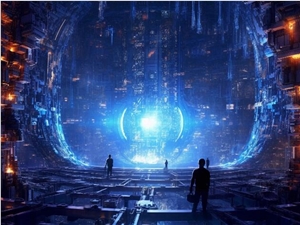Recently, the AI robot startup Generalist officially launched its milestone foundational model, GEN-0, and revealed the scaling laws in the field of robotics for the first time, marking the beginning of a new era in robotics technology, transitioning from "task-specific" to "general intelligence." The model is trained on more than 270,000 hours of real-world operational data, achieving the ability to "think and act simultaneously" across different hardware platforms for the first time. It has been regarded by the industry as the "ChatGPT moment" for robotics.

270,000 Hours of Real Data: Reject Simulation, Embrace the Chaotic World
Unlike competitors that rely on simulation environments or human demonstration videos, GEN-0 is trained directly on high-fidelity physical interaction data. These data come from real-world scenarios in thousands of homes, warehouses, and workplaces around the globe, covering hundreds of dexterous tasks such as peeling potatoes, tightening screws, opening packages, and assembling kits, with over 10,000 hours added weekly. This extreme capture of "real-world chaos" gives the model an unparalleled generalization ability—what it learns are not ideal actions, but how to complete tasks under disturbances like sliding, occlusion, and changes in lighting.
7B Parameters as the Critical Threshold for Intelligent "Phase Transition"
Generalist's breakthrough contribution lies in quantifying the scaling laws of robotic intelligence for the first time: the error in downstream tasks follows a power-law relationship with the amount of pre-training data (L(D) ∝ D⁻⁰·⁵). More importantly, the study found that 7 billion parameters is the critical threshold for a capability jump. Below this value, the model becomes "frozen" in massive data and struggles to transfer; once surpassed, the generalization ability grows exponentially. This discovery provides the industry with a clear path: continuously expanding the scale of real data can systematically enhance the level of robotic intelligence.
Harmonic Reasoning Architecture: First Achieving "Thinking and Acting Simultaneously"
The core innovation of GEN-0 is the Harmonic Reasoning (Harmonic Reasoning) architecture, which completely solves the problem of the separation between "thinking" and "acting" in robots. Traditional systems require planning before execution, while GEN-0 enables perception, reasoning, and action to work collaboratively in a unified time sequence through asynchronous continuous time flow. In the demonstration, the robot independently completes the entire process of "assembling a camera kit"—folding the tray, picking up objects, opening the bag, placing them, packaging, and cleaning—without any human instructions throughout, with smooth and natural actions, resembling a "human-like intuition."
Cross-Platform Generality: One Model Drives a Heterogeneous Robot Fleet
GEN-0 adopts a "cross-embodied" design, allowing the same model to be seamlessly deployed on 6-degree-of-freedom robotic arms, 7-degree-of-freedom arms, and even 16+ degree-of-freedom semi-humanoid robots, without the need to retrain strategies for each hardware type. This means companies can build a unified intelligent core to manage diverse robot terminals, significantly reducing deployment and maintenance costs.
Data Flywheel Activated, the Era of General-Purpose Robots Accelerates
Generalist is building a "data-intelligence" flywheel through its global deployment network: more robots generate more real interaction data, which feeds back into model iteration, thereby improving the capabilities of new robots. This model has the potential to end the current fragmented ecosystem of "one task, one model," pushing robots to evolve from specialized tools into general-purpose partners capable of self-learning.
Certainly, challenges remain—data privacy, computing costs, and safety validation still need improvement. However, there is no denying that the emergence of GEN-0 marks the beginning of a new era for embodied intelligence, one that is "predictable, scalable, and mass-producible." When robots can "reflect and grow" from massive experience like large language models, the intelligent beings from science fiction have quietly entered reality. And this revolution has just begun.










